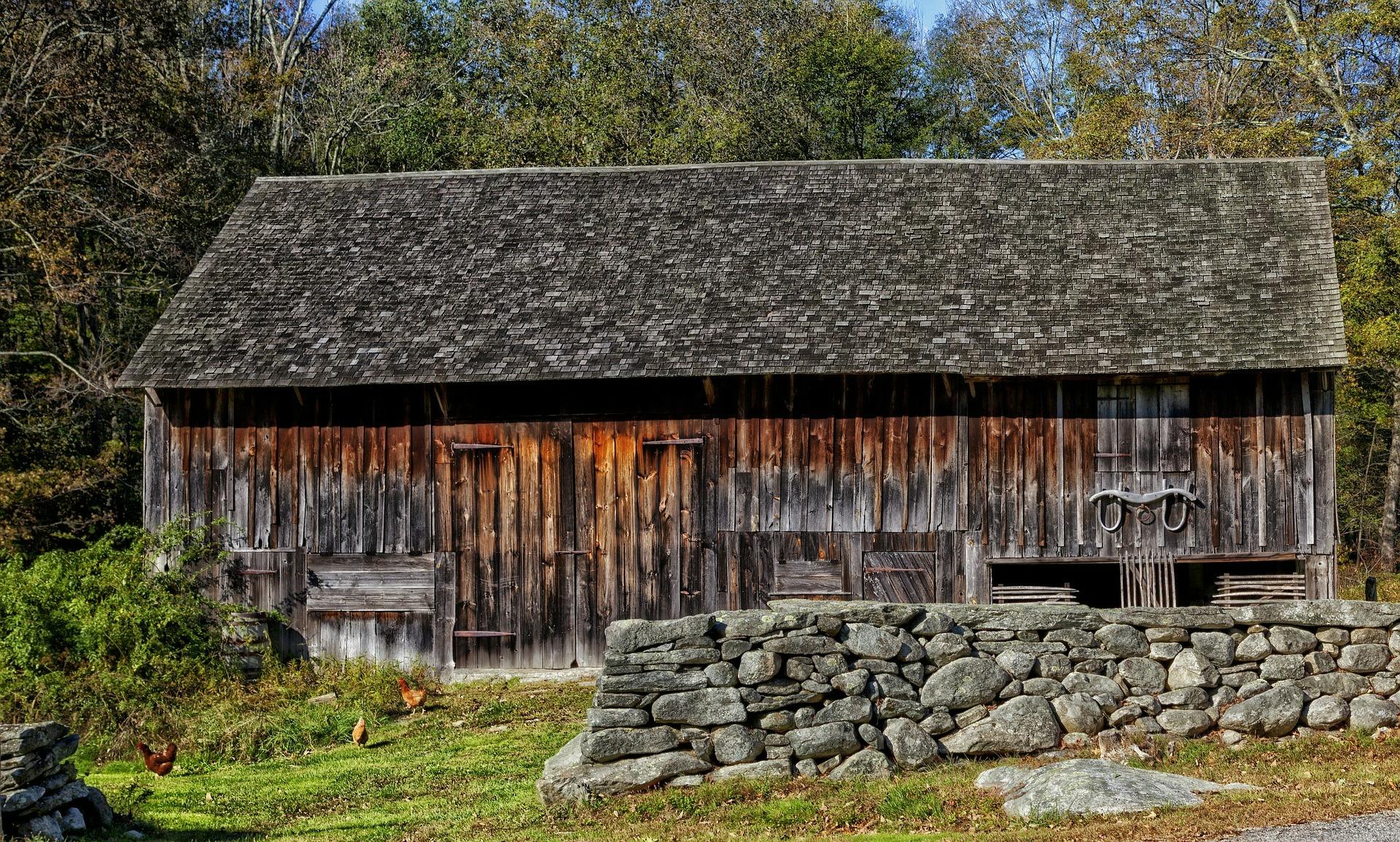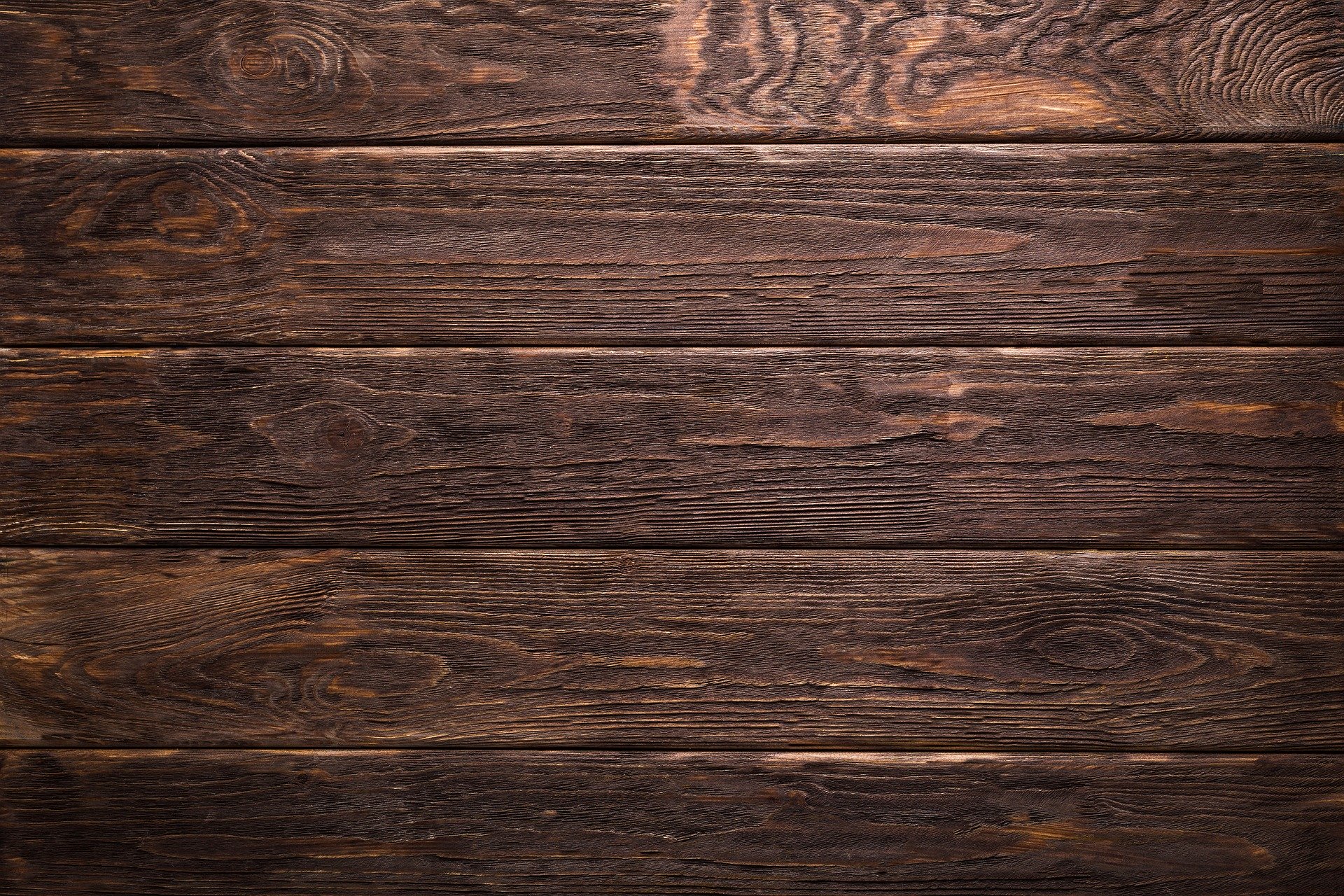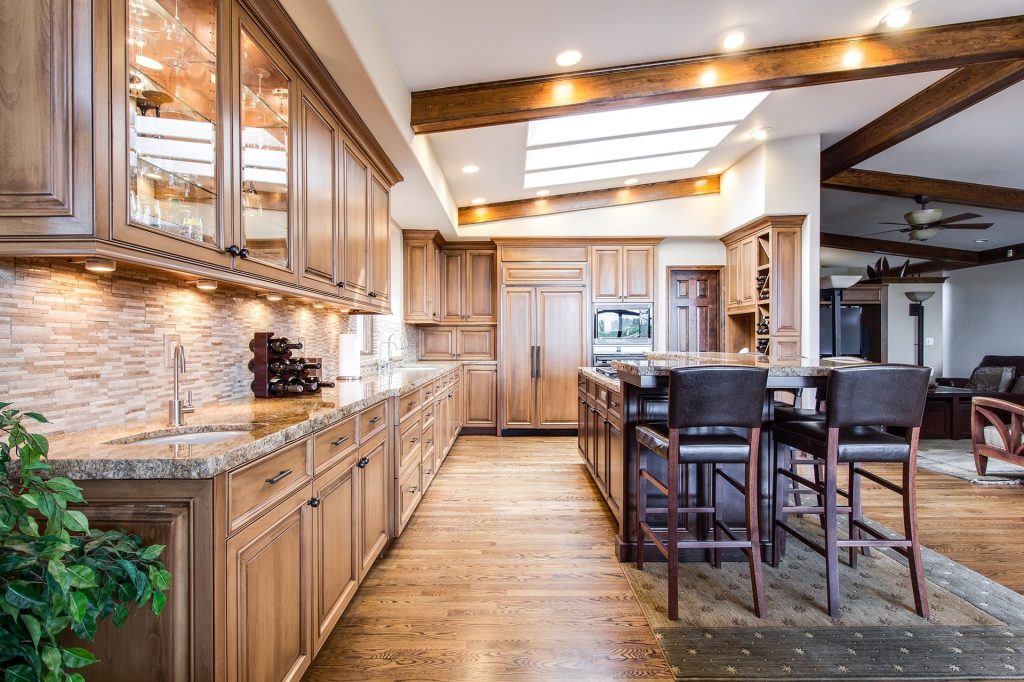There’s no denying that pretty much any object, from a snuff box to an entire house, that’s been constructed using sturdy wood and aged over centuries is going to look gorgeous.
Wood, when it’s been treated right and left to weather the long years, builds up a certain charm and character that just can’t be recreated with varnishes and other techniques. Antique or vintage wood items or buildings are almost priceless because of how rich they are with history and stories, their undeniable strength and durability, not to mention the rustic vibe they give houses.
But, of course, not everyone can just straight-up buy an entire 18th-century house and expect every piece of wood there to be usable. The reality is, old wooden buildings are susceptible to damage from extreme weather conditions, wood rot, and pests like termites. This is why reclaimed wood, i.e. wood that’s been salvaged from older buildings, are prized: they’ve stood the test of time, they’ve proven their durability, and they’ve retained an old-world charm that is unmatched.
Many people choose reclaimed wood not just to class up their home, however. There are people out there who actively seek out reclaimed wood in order to conserve them for posterity, while some people use reclaimed wood to minimize their carbon footprints.
Whatever the reason, reclaimed wood is one of those ‘premium’ construction materials that homeowners can use for all types of projects, and there’s plenty of reasons you should consider it for your home.
What Is Reclaimed Wood?

But first, let’s talk about what reclaimed wood actually is. In essence, reclaimed wood is any type of wood material that’s been salvaged or ‘upcycled’ from different sources. This type of wood can be taken from older buildings such as, but not limited to:
- Old factories
- Vintage barns
- Decommissioned ships
- Farmhouses
- Turn-of-the-century warehouses
- Wine and whiskey barrels
At some point in the life cycle of a building, their virgin wood counterparts are either stripped off to be replaced with other materials or destroyed by normal wear-and-tear. The wood that does survive has a natural, air-dried aspect to it that makes it suitable for upcycling.
This reclaimed wood is then taken by companies and further treated to bring out the natural grains, and to augment its durability and strength with modern chemicals, giving the material new life and further stretching its lifespan. Salvaged and treated properly, reclaimed wood can last decades, even centuries, and can stand up to the test of time and regular usage. It also gives your house better curb appeal; after all, there are few things out there that give a regular home such vibrant charm and character than reclaimed wood.
Again, there are myriad reasons people choose reclaimed wood, and here are just some of them:
Reclaimed Wood is Good for the Environment
Using wood for houses isn’t as simple as just chopping down a tree and slapping it onto the side of some rebar. It’s a lengthy process that involves selecting a mature enough tree (that is, trees whose wood has reached full maturity for maximum durability), chopping it down in a way that causes the least damage to the tree, and then hauling it off to a processing center where they convert it into lumber through various means and processes.
Overall, it’s a multi-day, even multi-week process that involves hundreds of man-hours and carbon footprints, even if it is from sustainable wood farms.
Reclaimed wood, however, uses so much fewer resources and manpower, not to mention carbon-emitting equipment: in fact, salvaging reclaimed wood takes up around 13 times less energy than the cumulative energy it takes to make virgin lumber.
But it’s not just in its processing, reclaimed wood also helps the environment. Because of its usage over time, the cellular structure of reclaimed wood is much denser than virgin lumber, making the former much more effective at trapping air. When used as flooring or for walls, reclaimed wood acts as a highly-efficient insulator, saving on heating and cooling bills, while also lessening our reliance on carbon-emitting appliances, helping you achieve the right temperature while lessening the use of HVAC systems.
At the end of the day, it helps you save both the environment and your bills, so it makes sense that reclaimed wood is a favorite material in the modern sustainable movement.
Reclaimed Wood is a Great Passion Project

Many people get into reclaimed wood because they have a love for conservation and reusability. In fact, in the United States alone, demolishing older buildings produce about 1 billion feet worth of usable lumber. While not every building is going to be a centuries-old barn, it’s still worth salvaging them and giving them a new life, creating what would have been waste material into beautiful, reclaimed wood. Reclaimed wood coffee tables and reclaimed wood walls are a popular way to repurpose old wood into something useful and beautiful.
Whether it’s distressed wood that you can turn into wall paneling, or old doors that would give your home’s entrance a rustic character, reclaimed wood has tons of potential and are a great way to get your carpentry skills to muster. Sure, you could just purchase already-processed reclaimed wood, but it’s so much more exciting and satisfying to process it yourself, giving the wood your personal care and attention and truly making it unique to your needs and aesthetic.
Reclaimed Wood Preserved History
The United States is a country that was founded by pioneers, and our ancestors created a rich, architectural history with the buildings they created. Using reclaimed wood helps keep the legacy of the American pioneering spirit alive by preserving the centuries-old wood they used in their barns and farmhouses and repurposing them for modern buildings.
A piece of reclaimed wood doesn’t just give off a rustic aesthetic; it is a living piece of history, one that stretched back all the way to the founding peoples of our great country.
Reclaimed Wood is Strong, Durable, and Stable

There’s a reason reclaimed wood has survived the test of time: the daily wear-and-tear, not to mention the effects of the weather, condenses the cellular structure of the wood, creating lumber that is strong, durable, and practically weather-proof. And it makes sense: the buildings that reclaimed wood comes from had to be constructed using the hardiest lumber possible.
And because they were harvested long before the prevalence of industrial pollution, reclaimed wood is also less prone to chemical damage.
Over the decades and centuries, these hardwoods were further strengthened by time and usage, creating a construction material that is without parallel in terms of strength and durability.
Reclaimed wood is also stable, meaning it is less prone to warping than virgin lumber. This is because reclaimed wood was exposed to different weather conditions over time, from various temperature changes to the humidity in the air. This means that the reclaimed wood has, over time, been constantly expanding and contracting, changing the cellular structure of the wood to be more stable and flexible.
This makes reclaimed wood the perfect material for areas that receive high-traffic and/or are faced with constant weather conditions, such as flooring and outside paneling. This material has the necessary durability and flexibility to stand up to the daily abuse they’ll be receiving in those areas. However, if they’re treated and maintained properly, they can potentially last for decades, maybe even centuries.
Reclaimed Wood is a Great Way to Use Exotic Wood Sustainably
The sustainable movement nixes the idea of using exotic woods for building materials, which makes sense: many exotic wood used for lumber are often harvested from slow-growth trees and/or from species of trees that are already endangered.
Fortunately, there is a lot of reclaimed wood out there that come from buildings that used exotic trees for building materials. Don’t worry: there’s a very big chance that the builders of those buildings harvested that wood long before they became endangered. In fact, a lot of old buildings used ‘exotic’ wood for lumber because, back then, they were cheap and plentiful.
Other than price, there aren’t a lot of downsides to using reclaimed wood: it’s strong, will last you forever, and gives your home a beautiful aesthetic that is hard to imitate, not to mention beneficial to both the environment and your home maintenance budget.

